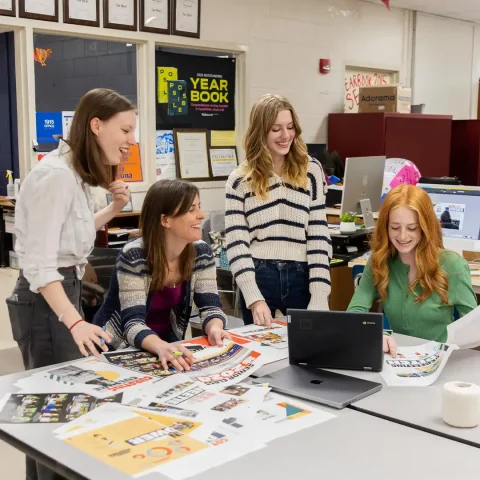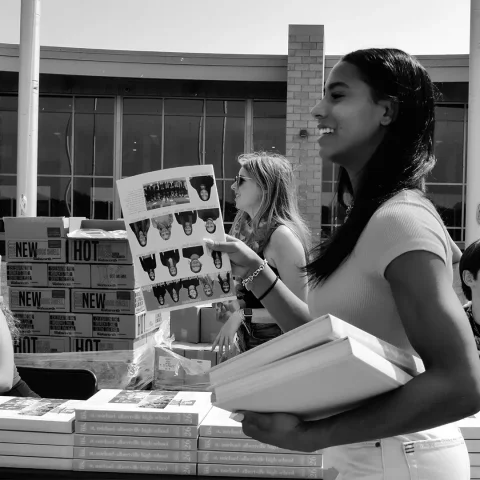Updated by Delaney Pierce April 2025
Brainstorming is an important step of the theme development process, but at times it can feel like the trickiest step. Where do we start? How do we make it productive? How long should our brains be storming?
Before any good brainstorming session, it is important to lay a few ground rules so everyone is on the same page.
Think Small
“The more, the merrier” might work with beach parties or weddings, but when it comes to generating ideas, less is, well, more. Limit your group to no more than seven, so you’re more likely to hear from each of them. If you have a large staff, divide them up into smaller groups and have them meet in separate locations so they don’t distract each other. When you pull the groups together, you end up with lots of new ideas that would not have surfaced in one large group.
Send an Invitation
Use a little bit of personality to announce your big event. Give a hint of topics being explored, but there’s no need to be too specific. This generates curiosity and inspires prospective collaborators to think ahead and come prepared. Advance planning should ward off some of those ”no such thing as dumb ideas.” Make a party of it. And don’t forget the M&Ms.
Include a Variety of Voices
If everyone in the group thinks similarly, the ideas are likely to be nothing new. You need input from staff in different grade levels with different responsibilities and interests. Make sure each group has writers, designers, photographers and editors. If you really want to take a chance on new ideas, invite someone who is not on staff to join you. A variety of voices translates into a variety of ideas.
Keep it Short
Set a time limit. If it’s a class period, your timer is already set. Outside of class, make sure you don’t schedule more time than you need. An hour is plenty. People should submit their ideas within the time frame. It’s better to end the session with unfinished ideas and a place to start in the next session. Unexpressed thoughts percolate, grow and become even more detailed and developed for the next session.
Appoint a Focused Leader and Notetaker
Brainstorming works best when well directed. The group leader needs to know how to keep members on task without dictating. A lack of leadership will result in a free-for-all where nothing gets accomplished. If members of the group get too deep in the weeds and minute details, bring them back up to surface level for big picture thinking. The time to nail down the nitty gritty will come at a later date.
The notetaker will be responsible for jotting down ideas as the group brainstorms. This person should still participate and contribute ideas of their own, but it’s important that the big ideas are collected in one central, digital location to reference down the road.
Limit Distractions
Aside from the notetaker, avoid using devices during this session. This keeps everyone engaged in the conversation and helps keep the group from losing their train of thought.
Throw in a Surprise or Two
Anything you do more than once runs the risk of becoming predictable. Ideas need to come from fresh places of unexpected inspiration and joy. In other words, make your sessions fun. And make them different each time. Remember to play. Have a few moments of planned silliness to get people breathing and laughing. It’s hard to be silent when you are having a good time.
Include the Tools of the Trade
A generous supply of large sheets of paper, markers, scissors, stickers and crayons will encourage doodling and note taking. Not everyone comes to a session prepared to remember. Give your group a place to jot things down as they think of them, even if they are not expressed at the moment. Good ideas should never be forgotten.
Treat Ideas with Respect
Whatever is shared is a gift. And just like those gifts that are not necessarily what you wanted, you still should show appreciation that something was given at all. Appreciation for ideas will encourage expression of more ideas. Eventually you will land on a winner. Even a mediocre thought can benefit from expression. Allow the group to elaborate on it and improve it.
Jump-start if necessary
If ideas are coming slowly, give everyone in the group a single small sticky note and a pen. Introduce the topic, and let people ask questions and talk about the possibilities. Set a timer for three minutes of independent thinking. Then have each person quietly write their sticky note. This forces simplification – a hallmark of a great idea – and forces each person to express something. Have everyone pass the sticky note to their left and go around the room reading someone else’s idea out loud. Repeat as desired, perhaps varying the parameters for who reads whose note.
Schedule a follow-up meeting.
This might be the most important point of all. The original session has ended, but ideas are just starting to take off. Let the group know that there will be another gathering in a day or two to expand on what made the most impact or to express new, retrospective thoughts. This need not be a long session, but it is an essential step to completing the entire process. The notetaker should share the collaborative document with notes from the day with their fellow group members so they can continue to elaborate on their ideas.
Give thanks.
A personal chat, text or email will let your group know their time and input is appreciated. Your valuing of their thoughts and ideas will encourage future participation.
Brainstorming doesn’t have to be overwhelming – it just needs the right structure, the right people, and a little creative energy. By setting clear expectations and fostering an environment where ideas can flourish, you’ll unlock some truly inspired themes.
Need more inspiration? Take a look at our Finding Inspiration Class Starter and Walsworth Training Video Series for classroom resources.




